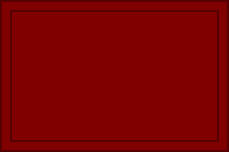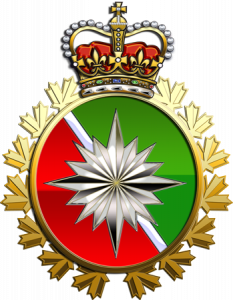
The British Army is the principal land warfare force of the United Kingdom, a part of the British Armed Forces along with the Royal Navy and the Royal Air Force. As of 2022, the British Army comprises 79,380 regular full-time personnel, 4,090 Gurkhas, and 28,330 volunteer reserve personnel.
A company is a military unit, typically consisting of 80–250 soldiers and usually commanded by a major or a captain. Most companies are formed of three to seven platoons, although the exact number may vary by country, unit type, and structure.
Corps is a term used for several different kinds of organization. A military innovation by Napoleon I, the formation was first named as such in 1805. The size of a corps varies greatly, but from two to five divisions and anywhere from 40,000 to 80,000 are the numbers stated by the US Department of Defense.
Staff sergeant is a rank of non-commissioned officer used in the armed forces of many countries. It is also a police rank in some police services.

The 5th Canadian Division is a formation of the Canadian Army responsible for the command and mobilization of most army units in the provinces of New Brunswick, Nova Scotia, Prince Edward Island and Newfoundland and Labrador; as well as some units in Kingston, Ontario. The division is recognized by the distinctive maroon patch worn on the sleeve of its soldiers.

The Royal Canadian Regiment is an infantry regiment of the Canadian Army. The regiment consists of four battalions, three in the Regular Force and one in the primary reserve. The RCR is ranked 1st in the order of precedence amongst Canadian Army infantry regiments, but in a quirk of the rules of seniority, its 4th battalion is 9th.

The Intelligence Corps is a corps of the British Army. It is responsible for gathering, analysing and disseminating military intelligence and also for counter-intelligence and security. The Director of the Intelligence Corps is a brigadier.

Rogers' Rangers was a company of soldiers from the Province of New Hampshire raised by Major Robert Rogers and attached to the British Army during the Seven Years' War. The unit was quickly adopted into the British army as an independent ranger company. Robert Rogers trained and commanded the rapidly deployed light infantry force, which was tasked mainly with reconnaissance as well as conducting special operations against distant targets. Their tactics were built on earlier colonial precedents and were codified for the first time by Rogers as his 28 "Rules of Ranging". The tactics proved remarkably effective, so much so that the initial company was expanded into a ranging corps of more than a dozen companies. The ranger corps became the chief scouting arm of British Crown forces by the late 1750s. The British forces in America valued Rogers' Rangers for their ability to gather intelligence about the enemy. They were disbanded in 1761.

A military staff or general staff is a group of officers, enlisted and civilian staff who serve the commander of a division or other large military unit in their command and control role through planning, analysis, and information gathering, as well as by relaying, coordinating, and supervising the execution of their plans and orders, especially in case of multiple simultaneous and rapidly changing complex operations. They are organised into functional groups such as administration, logistics, operations, intelligence, training, etc. They provide multi-directional flow of information between a commanding officer, subordinate military units and other stakeholders. A centralised general staff results in tighter top-down control but requires larger staff at headquarters (HQ) and reduces accuracy of orientation of field operations, whereas a decentralised general staff results in enhanced situational focus, personal initiative, speed of localised action, OODA loop, and improved accuracy of orientation.

2 Intelligence Company is a Canadian Armed Forces Primary Reserve Intelligence Branch unit based in Toronto, headquartered at Denison Armoury. It is part of the 4th Canadian Division. The Intelligence Officers and Operators of the unit reside in the Greater Toronto Area, work as professionals in the business community and are also active in numerous community service organizations. They deploy on domestic and foreign operations, and are primarily responsible for tactical, or combat intelligence. Recent deployments include to Cyprus, Bosnia, Afghanistan, Kuwait, and Canada.

The Royal Canadian Armoured Corps is the armoured corps within the Canadian Army, including 3 Regular and 18 Reserve Force regiments as well as the Royal Canadian Armoured Corps School.

The Canadian Forces Military Police provide police, security and operational support services to the Canadian Armed Forces (CAF) and the Department of National Defence (DND) worldwide.
The history of the Canadian Army, began when the title first came into official use in November 1940, during the Second World War, and is still used today. Although the official titles, Force Mobile Command, and later Land Force Command, were used from February 1968 to August 2011, "Canadian Army" continued to be unofficially used to refer to the ground forces of the Canadian Armed Forces, much as it has been from Confederation in 1867 to the present. The term was often even used in official military publications, for example in recruiting literature and the official newspaper of the Canadian Forces, The Maple Leaf. On August 16, 2011, the title, "Canadian Army", was officially restored, once again bringing the official designation in line with common and historical usage.

The Communications and Electronics Branch is a personnel branch of the Canadian Armed Forces (CAF). The army component of the branch is designated the Royal Canadian Corps of Signals.

The Intelligence Branch is a personnel branch of the Canadian Forces (CF) that is concerned with providing relevant and correct information to enable commanders to make decisions.
The Canadian Intelligence Corps is a component within the Canadian Armed Forces' Intelligence Branch, consisting of all members of that branch who wear army uniform. Prior to the 1968 unification of the Canadian Forces, it was an administrative corps of the Canadian Army. In 1968, the corps was stood down and folded into the new Security Branch. The Intelligence Branch was separated from the Security Branch in 1981. In 2017 the C Int C title was restored for the army members of the Intelligence Branch.
3 Military Police Regiment (3MPR) is a unit of the Canadian Army. Like all the CF Army Military Police Regiments, while they reside within the Regular Force, the units are actually "total force" units comprising both a regular and reserve component. The Regular component consists of the headquarters and a policing platoon in Gagetown, New Brunswick. The Reserve component consists of a company of three platoons located in Halifax, Nova Scotia and Moncton, New Brunswick.
36 Signal Regiment is Reserve unit of the Canadian Army, assigned to 36 Canadian Brigade Group. It was created on 1 April 2012 after several years of planning.
6 Intelligence Company is a military intelligence unit of the Canadian Army. It is a line unit that falls directly under 3rd Canadian Division command, which is headquartered in Edmonton. The company is divided into three platoons, which are located in Vancouver, Winnipeg, and Edmonton, with a detachment in Calgary. The members of the unit are recruited from other military trades as well as from various civilian organizations. The intelligence operators and intelligence officers of the unit train regularly in order to support domestic and foreign missions at the tactical, operational, and strategic levels.
4 Intelligence Company, in French and officially 4ième Compagnie du renseignement, is a Canadian Forces Primary Reserve Intelligence Branch unit headquartered in Montreal, with a platoon at Valcartier Garrison near Quebec City. It is a part of the 2nd Canadian Division. The unit draws its historical lineage from the 4th Troop of Volunteer Cavalry of Montreal that took part in the actions to repel Fenian raiders attempting to invade Canada in 1866.











